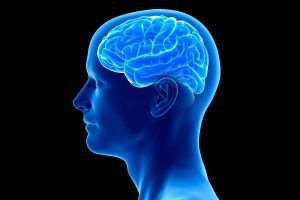Two civil society movements in the last quarter of a century shook the conscience of the nation. The first was the anti-corruption movement led by Anna Hazare (2011) at Delhi and the second was the movement demanding justice for the victim after the incident of rape and killing of a young post-graduate trainee doctor at the R G Kar Government Medical College and Hospital at Kolkata. Thirteen years back, in the movement of Anna Hazare, people from all walks of life from Delhi and surrounding states ga – thered and participated.
Though the political parties at that time, viz. Arvind Kejriwal’s team of India Against Corruption and opposition BJP solidly supported Anna’s movement from behind, spontaneous participation of the commoners led the movement to cross the threshold of partisan politics. Since the movement focused on corruption at high places, the Congress-led UPA government was defensive at the time. After the heinous crime leading to the rape and killing of the young doctor at R.G. Kar, the civil society in Bengal overwhelmingly joined the movement of the junior doctors and that raised the movement beyond the threshold of partisan politics.
Advertisement
The medical professionals all over the country joined the movement and showed solidarity towards the Kolkata doctors leading the Apex Court to take suomotu cognizance of the sequence of events. The opposition political parties of the State ~ the CPI (M), BJP and Congress supported the mo – vement of the doctors, but never could take control of it, and that gave the long-drawn movement a high degree of respectability. The momentum of the movement and the effective monitoring of the Supreme Court apparently led to substantial progress in the investigation by the Central Bureau of Investigation and the agitating doctors thought that if they succeeded in keeping the pressure on, the investigating agency perhaps would take efforts in identifying all who were directly or indirectly involved in committing the crime, and the exact motive behind it.
The doctors, therefore, decided to continue with the agitation, though partially lifting the cease-work. Since the hein – ous crime happened in a government hospital and since the then Principal of the Hospital and the in-charge of the local Police Station have already been arrested by the investigating agency for alleged attempt to destroy vital evidence and many more are under the CBI radar, the State Government is in a defensive position in the entire episode.
Civil society demands that all those who were involved in the ghastly crime should be prosecuted and punished, as also all those who indulged in corruption of varying sorts in the hospital. This ‘protest’ by citizens is the silver lining in an otherwise gloomy society. The judicial system also rose to the occasion and acted as the safety valve for our democracy. The role of the judiciary in restraining public anger is best appreciated if we compare the happenings in the State vis-à-vis all that happened in neighboring Bangladesh just a few weeks earlier. In that sense, the R G Kar incident demonstrated the strengths of Indian democracy.
The present civil society movement in Bengal will go a long way to give a message to the political parties that support of the mute voters should never be taken for granted. People will inevitably rise when they are pushed to the wall. In spite of everything, did Anna Hazare’s anti-corruption movement succeed in giving a similar message to the political system? Definitely it did so at that point of time but it failed to sustain the relevance of the agitation in the long run. Two and half years after Anna’s movement, the UPA government at the Centre lost in the election and the BJP-led NDA came to power. No one claimed that the UPA lost the election because of Anna’s movement.
But definitely corruption was an important issue in the 2014 parliamentary election. Civil Society movements sometimes influence the mind of the floating voters but what is more important is to probe whether Anna’s movement succeeded in reducing the corruption in public life in the country in any way in subsequent years? It did not. Though Anna’s movement had some influence in the short run, its spirit could not be sustained for long. No one can assess at this stage how the civil society movement in Bengal, led by the junior doctors, is going to influence the political scenario of the State in the next Assembly election after one and half years.
In General Elections, different layers of identity of people at different levels play a very complex role in influencing the voting pattern. Whether the present leadership of the ruling party takes any corrective measures to reduce corruption in the government hospitals, or in eliminating the threat culture, remains to be seen.
People will keenly watch how the present regime addresses all the issues of corruption and maladministration in the health sector that came to light after the tragic incident of R.G. Kar. Besides identification, prosecution and punishment of the perpetrators, what is important is to make the government hospitals a safer place for treatment ~ where spurious medicines or adulterated saline will not be administered to the patients, where medical professionals and support staff can work with dignity and where patients are provided with protection from the syndicates of the agents of various sorts.
If in the long run State-managed hospitals can progress even one step towards those goals, it will prove to be the biggest success of the long-drawn struggle of junior doctors, one that has been backed by the civil society
(The writer, a former civil servant, is an independent commentator on socio-economic issues and public policies)











